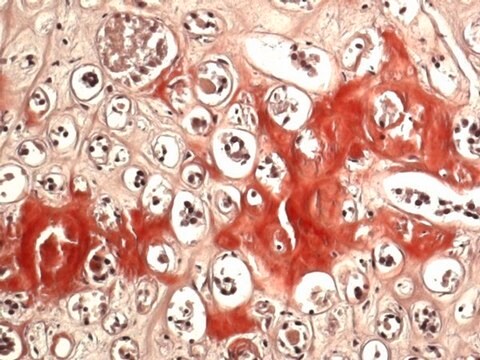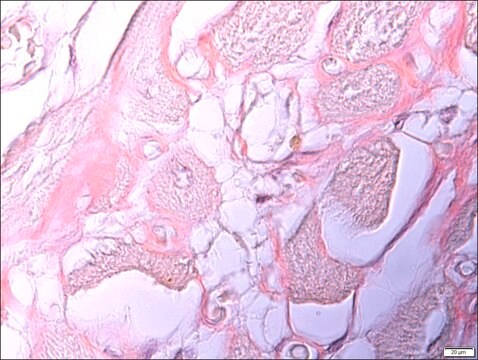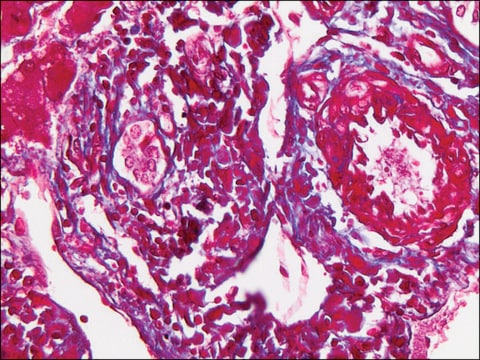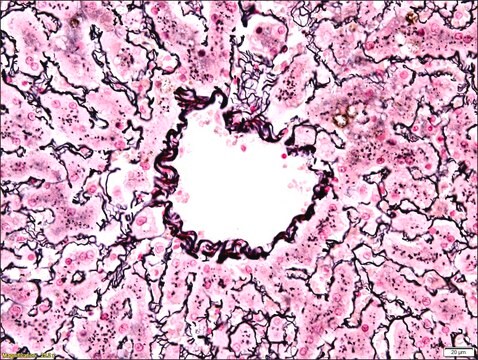HT60
Amyloid Stain, Congo Red
Sinónimos:
Puchtler’s Modification for Amyloid
About This Item
Productos recomendados
caducidad
Expiry date on the label.
Nivel de calidad
DIV
for in vitro diagnostic use
aplicaciones
hematology
histology
temp. de almacenamiento
room temp
Principio
Solo componentes del kit
- Congo Red Solution (kit only) 500 mL
- Sodium Chloride Solution, Alcoholic (kit only) 500 mL
- Sodium Hydroxide Solution (kit only) 2 x 12
Producto relacionado
Palabra de señalización
Danger
Frases de peligro
Consejos de prudencia
Clasificaciones de peligro
Carc. 1B - Eye Irrit. 2 - Flam. Liq. 2 - Met. Corr. 1 - Skin Irrit. 2
Código de clase de almacenamiento
3 - Flammable liquids
Punto de inflamabilidad (°F)
57.2 °F - closed cup
Punto de inflamabilidad (°C)
14.0 °C - closed cup
Certificados de análisis (COA)
Busque Certificados de análisis (COA) introduciendo el número de lote del producto. Los números de lote se encuentran en la etiqueta del producto después de las palabras «Lot» o «Batch»
¿Ya tiene este producto?
Encuentre la documentación para los productos que ha comprado recientemente en la Biblioteca de documentos.
Los clientes también vieron
Protocolos
A stem cell culture protocol to generate 3D NSC models of Alzheimer’s disease using ReNcell human neural stem cell lines.
Nuestro equipo de científicos tiene experiencia en todas las áreas de investigación: Ciencias de la vida, Ciencia de los materiales, Síntesis química, Cromatografía, Analítica y muchas otras.
Póngase en contacto con el Servicio técnico














